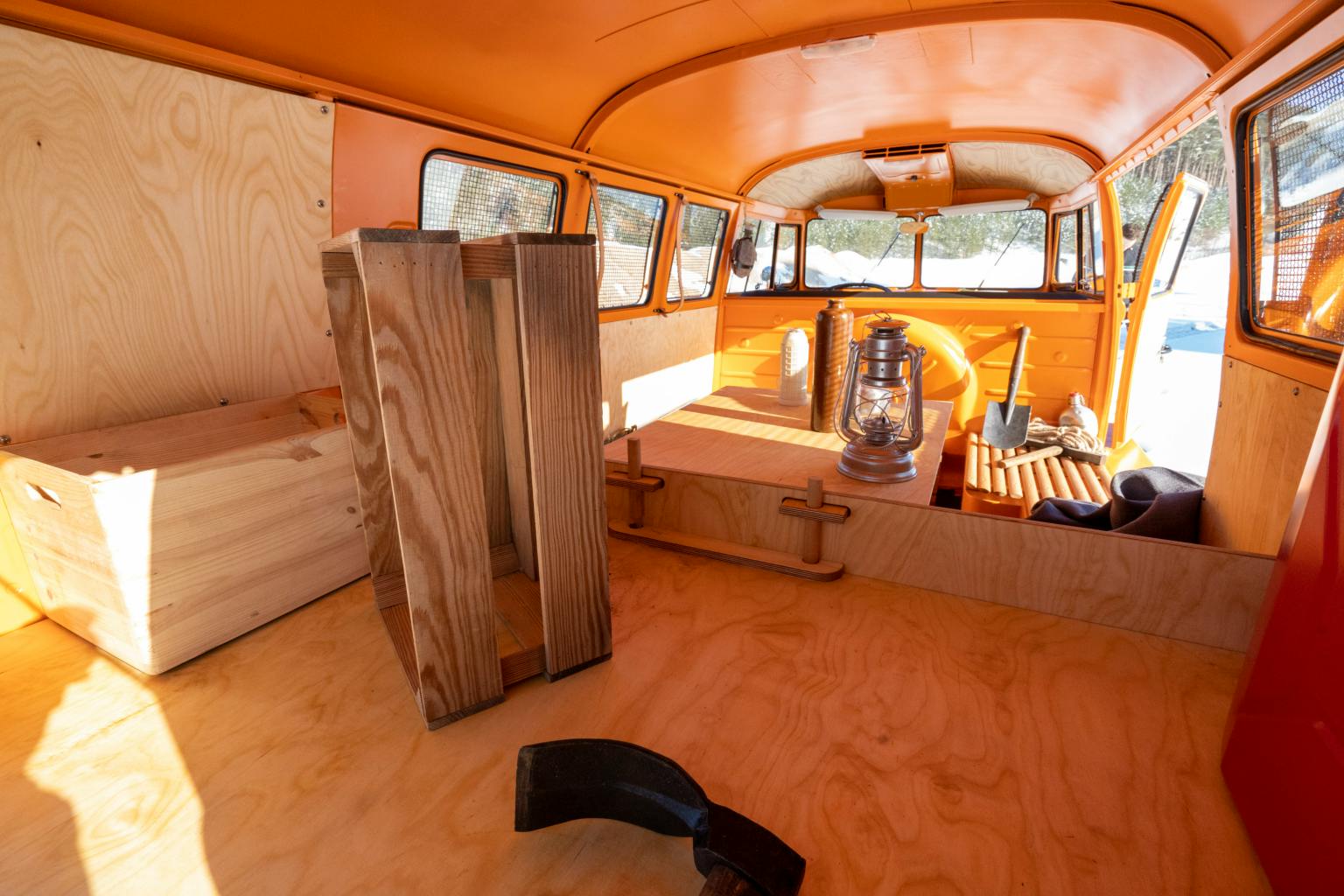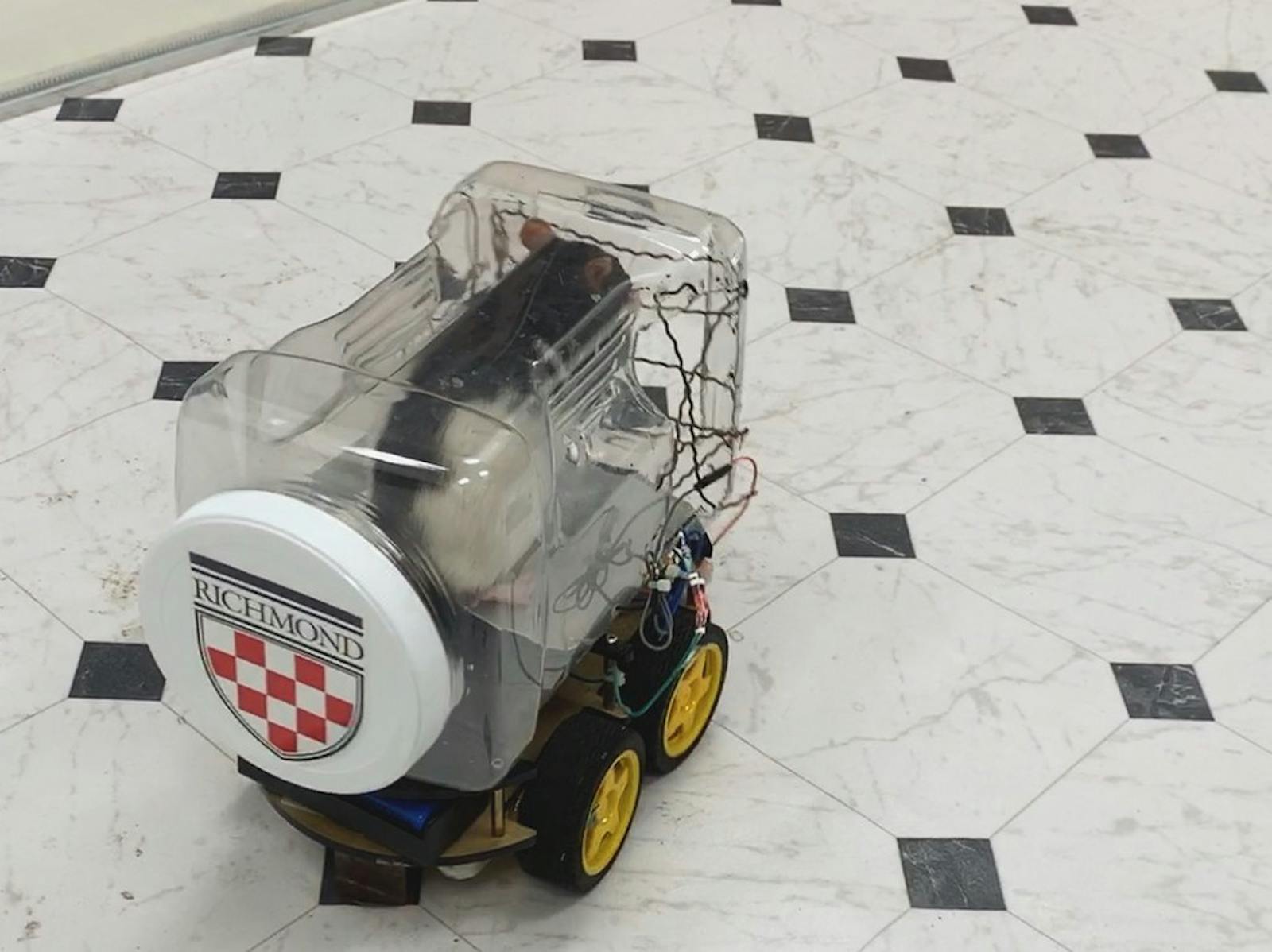Four-axle VW Bus lives again, more hp for Golf R’s 20th, Iceman to NASCAR
Good morning, or afternoon, dear Manifoldians: There will be no daily news digest this upcoming Monday, Memorial Day, May 30th. For the Manifold’s return Tuesday, come ready to share your thoughts on reborn DeLorean’s electric supercar, scheduled to debut early next week.
Restored by VW, four-axle T1 will conquer the Alps once again
Intake: VW Commercial Vehicles has just restored the most adventurous T1 ever made. It was sold in standard form to an owner in Austria in 1962, but Viennese mechanic Kurt Kretzner had lofty plans for the van. Kretnzer wanted to turn it into a mountain-climbing machine, “An ideal helper for everyone: mountain hut keepers, hunters, foresters, doctors, maintenance engineers for ski-lifts, TV and radio masts, pipelines and the like,” as he described in the brochure for his “Half-track Fox.” Kretzner fitted a double axle with 14-inch wheels at the front to take care of steering, while drive was provided by another double axle, utilizing 13-inch wheels linked by caterpillar-type tracks. An automatic limited-slip differential was installed to maximize traction, but the van’s 1.2-liter flat four engine was unmodified. With just 34 hp, the Half-track Fox could only muster a top speed of 22 mph, but that’s still considerably quicker than hiking. Although Kretzner hoped to sell the Fox, only one was built and it was seldom seen. It passed through the hands of the Porsche Museum in Gmünd, Germany, and the Bullikartei e.V. club who attempted to restore it, before it reached VWCV Classic Vehicles, who began a lengthy restoration in 2018.
Exhaust: We’ve seen some crazy VW van builds, from Gotham Garage’s six-wheeled Frank’N’Bus to Richard Hammond’s ill-fated canal boat conversion, but this 60-year-old T1 is just genius. Can you imagine a cooler way to climb?
VW’s 20th birthday present to the Golf R is … more power
Intake: Ever since its arrival in 2002, the Volkswagen Golf R (in early form it was called the R32) has represented maximum hatchback. To celebrate 20 years of the über hatch, Volkswagen is readying a special edition, dubbed the Golf R 20 Years Edition. If the Euro-spec car (shown here) is any indication, expect a mild bump in power—330 hp or so versus the regular R’s 315—as well as a few design details such as a “20” badge on the B pillar, a different spoiler, and blue wheels and mirror caps. A new feature called “Emotion Start” will rev the engine all the way to 2500 rpm when you punch that start button, but that’s really just to make a bit more noise—it yields no mechanical gains. VW’s keeping tight-lipped on any differences between the Euro- and U.S. market cars, but some clues may lie in the 2023 model-year updates given by Audi to the Golf R’s platform-mate, the RS3. That rowdy little five-cylinder sedan gets a louder exhaust here in the U.S., so it’s not a stretch to imagine this special Golf R will, too. Perhaps that freer-exhaling exhaust will take credit for a few extra hp?
Exhaust: We’ve driven the base 2022 Golf R twice now, once on winding Ohio roads and once in Michigan’s snowy Upper Peninsula. Each time, we walked away impressed. Whereas older versions of the car—such as the original 2002 MK4 model and the 2007 through 2014 MK5 model—employed Volkswagen’s quirky VR6 six-cylinder engine and a Haldex all-wheel-drive system, this new MK8 car uses a juiced-up version of VW’s workhorse EA888 2.0-liter turbocharged four-cylinder and a new AWD system with a trick rear-control unit that accomodates a drift mode. Expect this 20 Years Edition model to be a hot commodity among the the hyper-hatchback’s most ardent fans.
Bentley celebrates 70 years of the iconic R-Type Continental

Intake: Bentley is celebrating 70 years since the start of production of the R-Type Continental, one of the most renowned cars in the company’s 103-year history and the first Bentley to wear the Continental name. While the first prototype R-Type Continental—known as “Olga,” thanks to its OLG490 registration—was on the road in August 1951, production began in May 1952. By the time the last R-Type was assembled in 1955, 208 R-Type Continentals had been built, and 193 of them were bodied by HJ Mulliner, which used aluminum liberally to reduce weight. At the time, the Continental—propelled to 120 mph by a 153-horsepower, 4.6-liter, six-cylinder inline engine—was the fastest four-seat automobile in the world. That mantle was passed on to the modern-day Continental GT in 2003.
Exhaust: The R-Type Continental was as rare a sight in the 1950s as it is today, but you can still see the car’s elegant exterior lines in all three modern generations of the Continental GT. It’s no wonder that the R-Type went down in history as a benchmark Bentley.
Retired F1 star Kimi Räikkönen to race in NASCAR this summer

Intake: Trackhouse Entertainment Group announced yesterday that Formula 1 champion Kimi Räikkönen will make his debut in the NASCAR Cup Series, driving the No. 91 Chevrolet Camaro ZL1 at Watkins Glen this August. Räikkönen retired from F1 competition at the end of 2021 with 21 race wins, 103 podiums, and a world title in 2007. Now he will race stateside, and add to his stock car resume that already includes on two starts in NASCAR’s lower leagues. According to Räikkönen, he wasn’t actively searching for a racing seat. Instead, Marks came to him, literally, as he journeyed to the driver’s Switzerland home to convince Kimi to come aboard. “The Iceman’s” maiden Cup Series race will also be the first installation in Trackhouse’s PROJECT91 program—a NASCAR Cup Series entry in select races reserved for renowned international drivers. Currently, the group’s race team Trackhouse Racing fields two Cup Series entries with drivers Ross Chastain and Daniel Suárez.
Exhaust: From signing Pitbull as a co-owner to turning heads with glitzy car haulers, Justin Marks and his Trackhouse group know how to make a splash. And so far, its NASCAR team is living up to the hype in its sophomore year of Cup Series competition, having already notched two wins. PROJECT91 is yet another step in the expansion that promises to yield big impressions for the young team, regardless of results. In fact, the finishing position is likely the least important aspect of this venture. NASCAR competition is as rigorous—and cutthroat—as it is in Formula 1; gone are the days that open-wheel drivers like Foyt or Gurney could parachute into a one-off race and leave with the trophy. Instead, this announcement is a marketing play, a maneuver to dominate the NASCAR headlines while bring international notoriety to Trackhouse. The flying Finn is still totally relevant, and, less than a year into retirement, his stock car soiree will bring eyeballs to Cup for at least a weekend. “Kimi Räikkönen is the driver I first had in mind when we created PROJECT91,” says Marks. Come August, we’ll find out whether the first choice was the best.




















